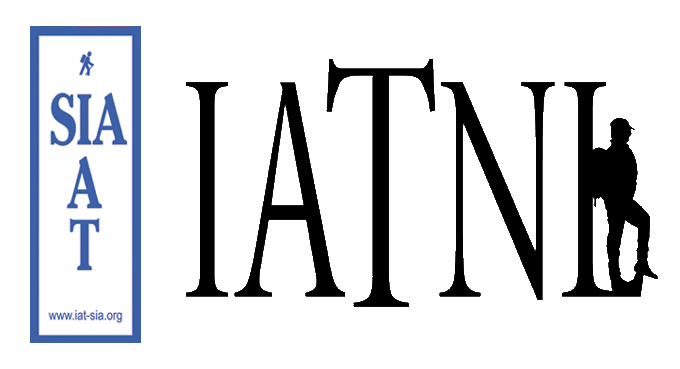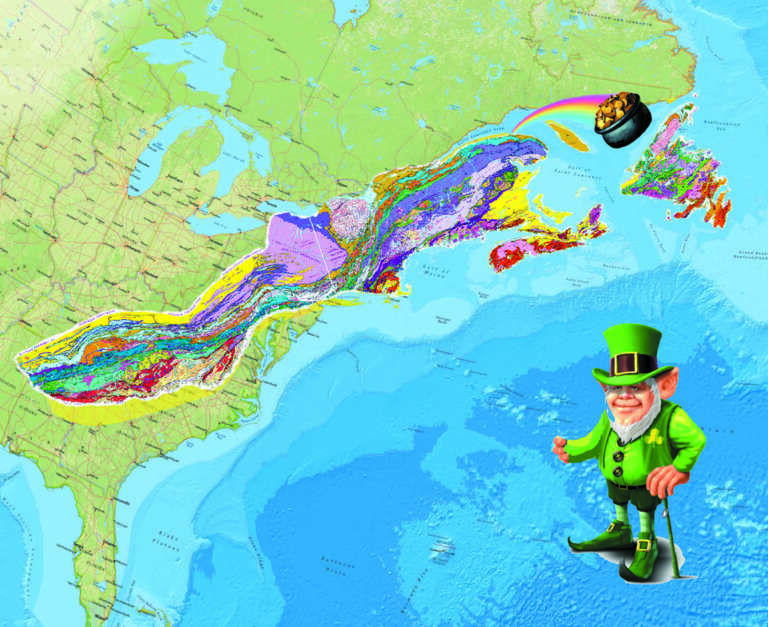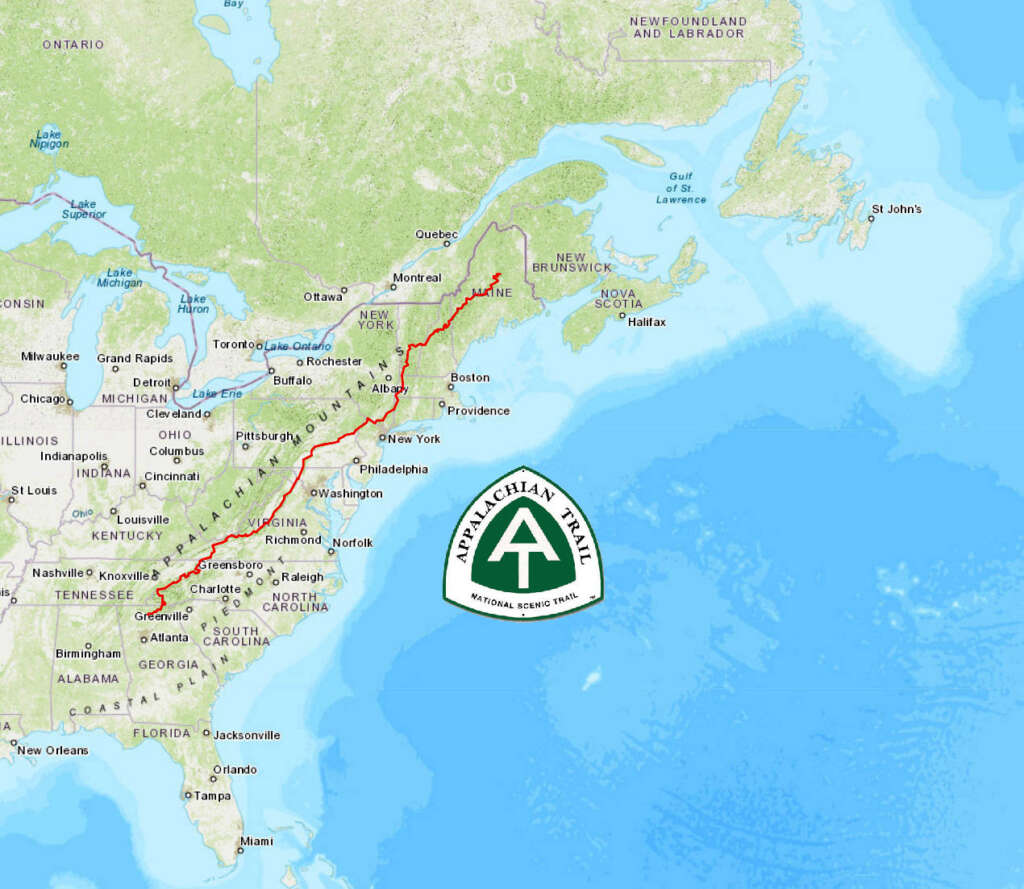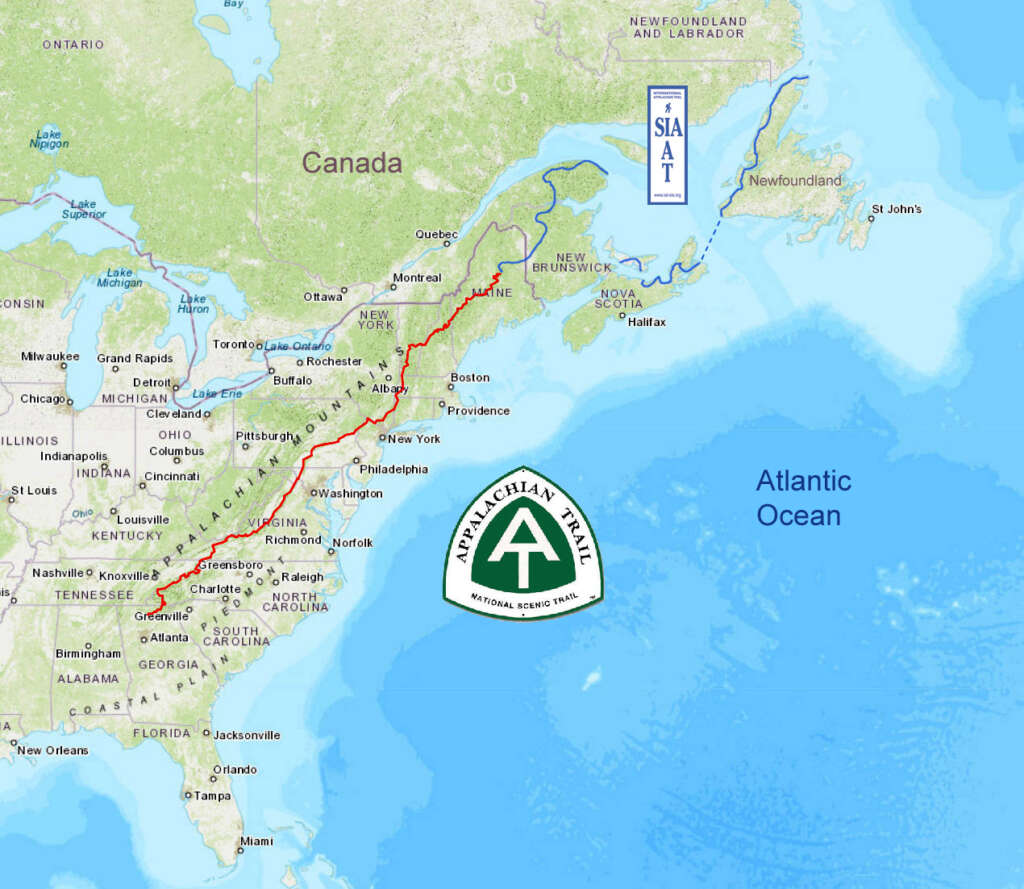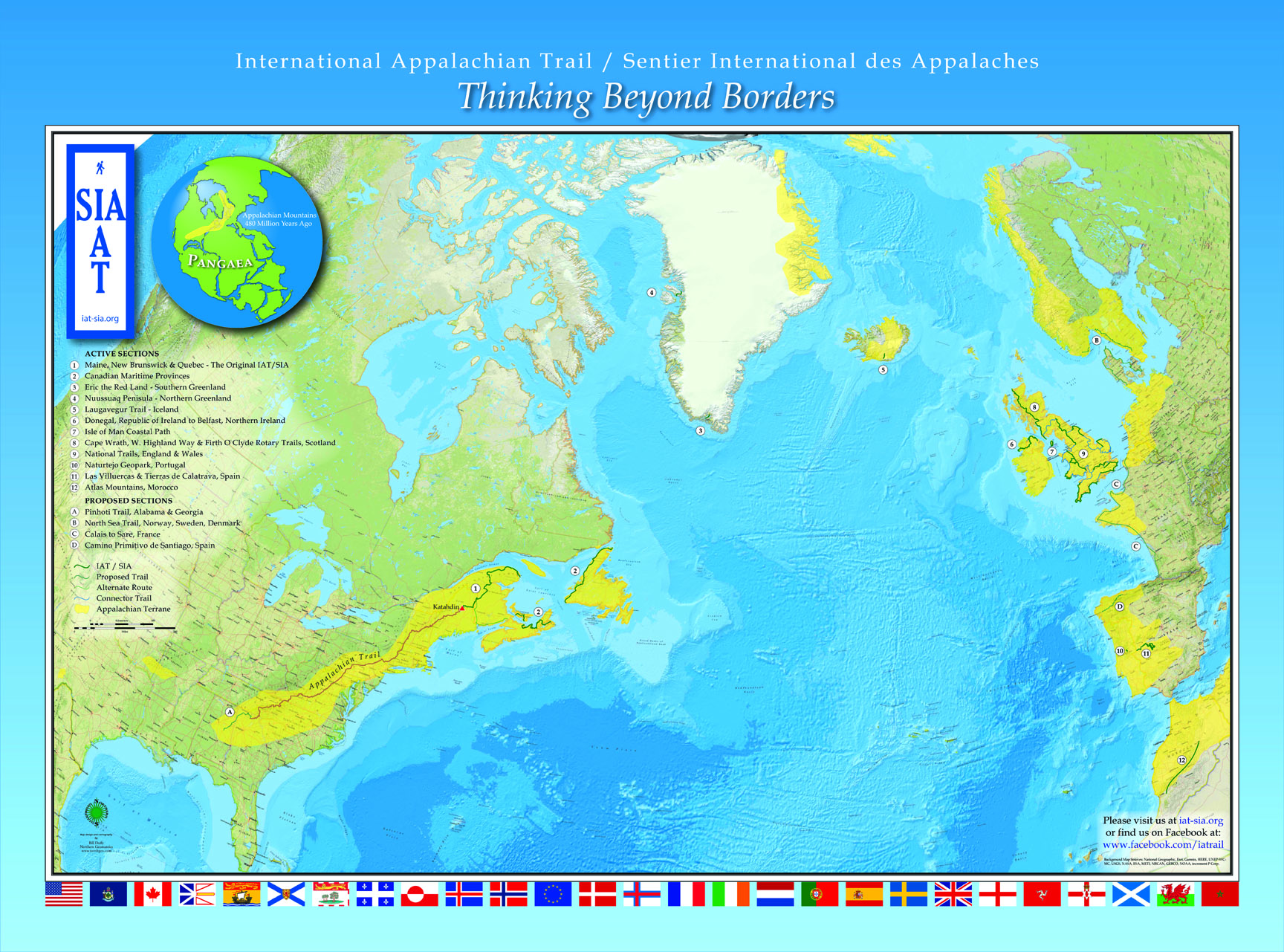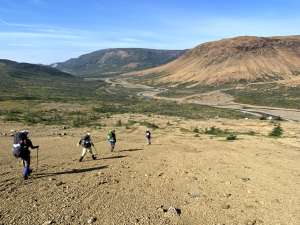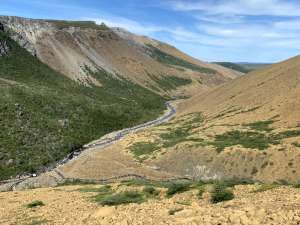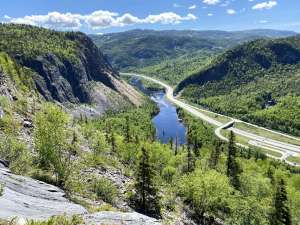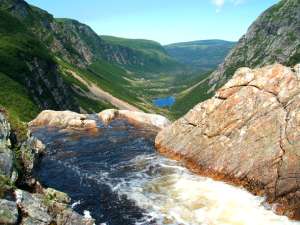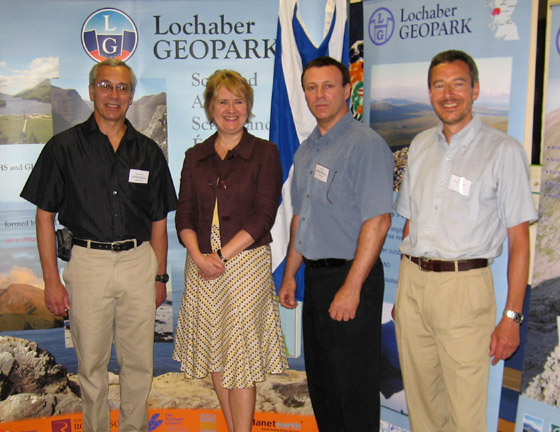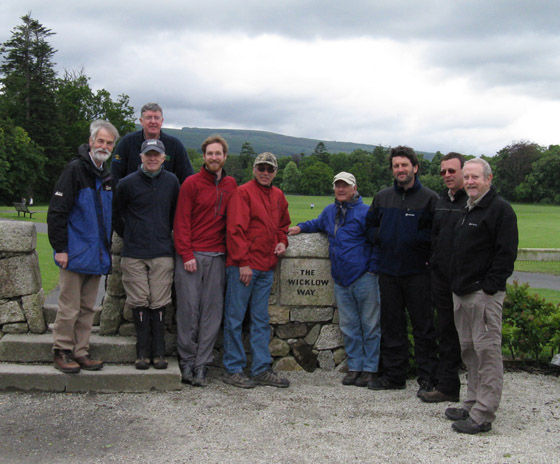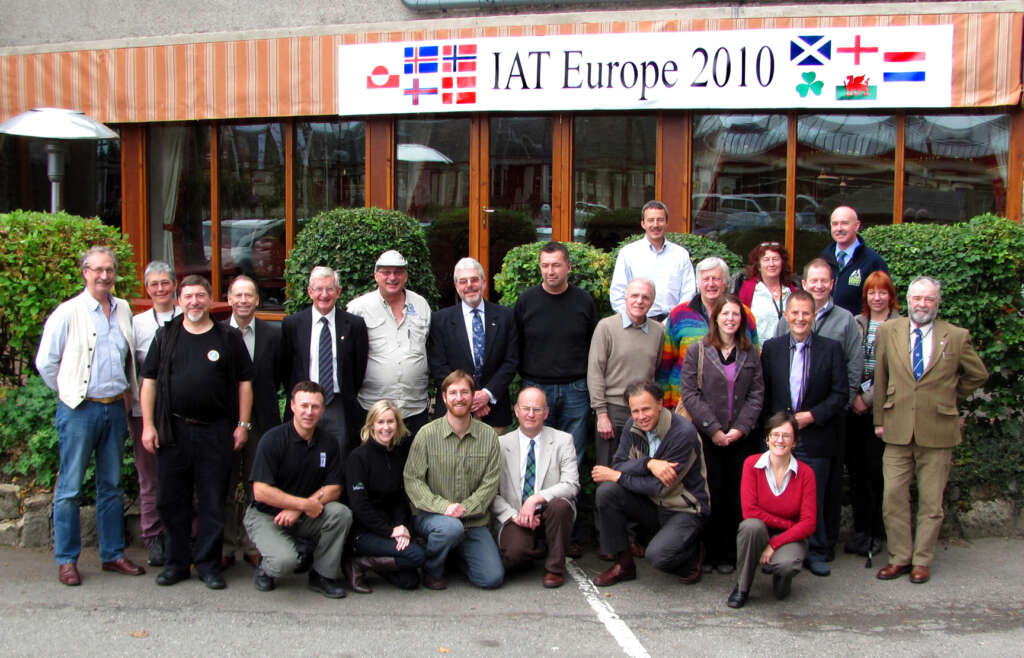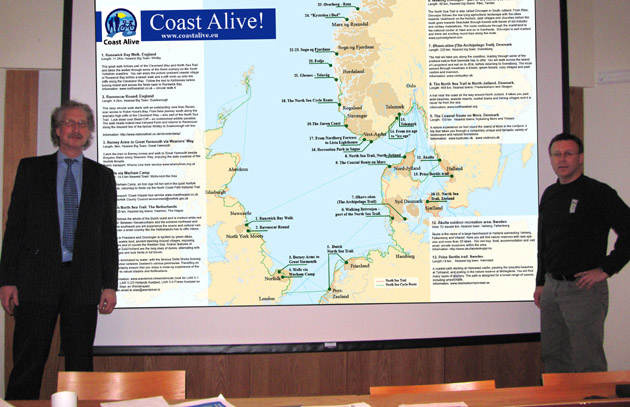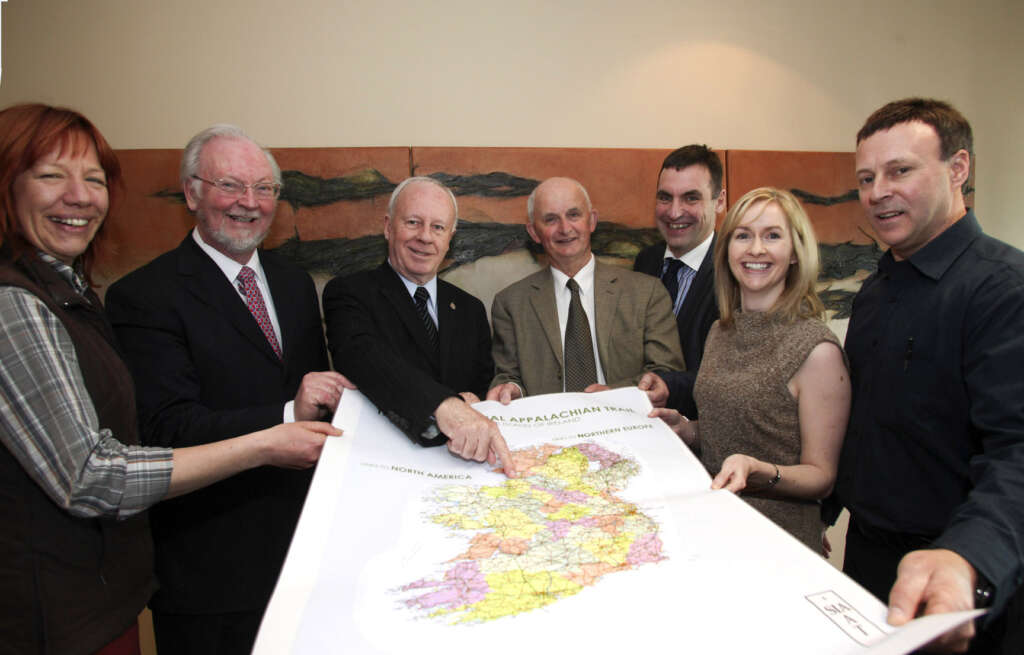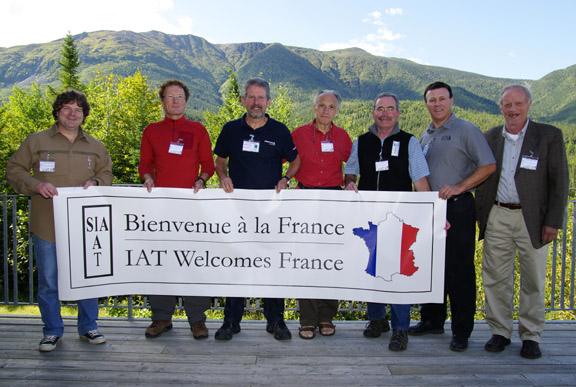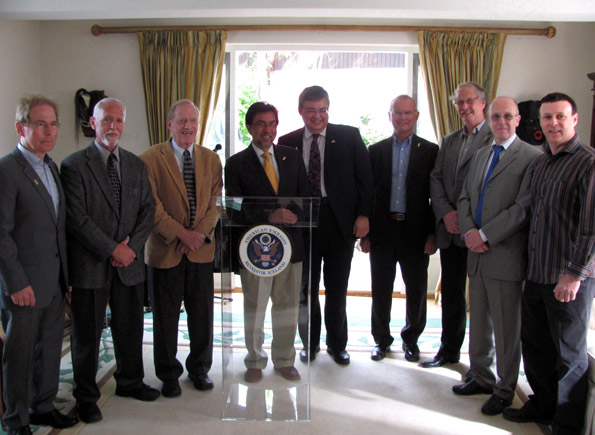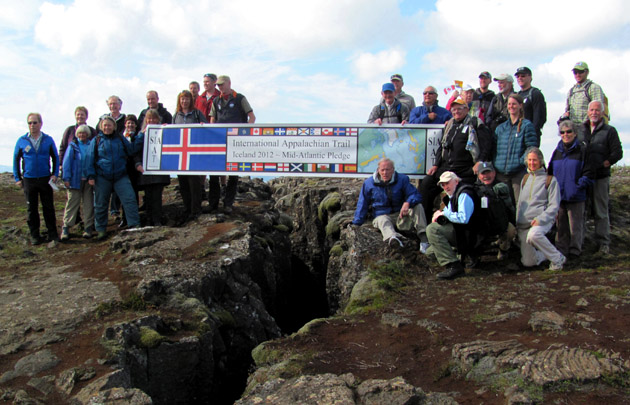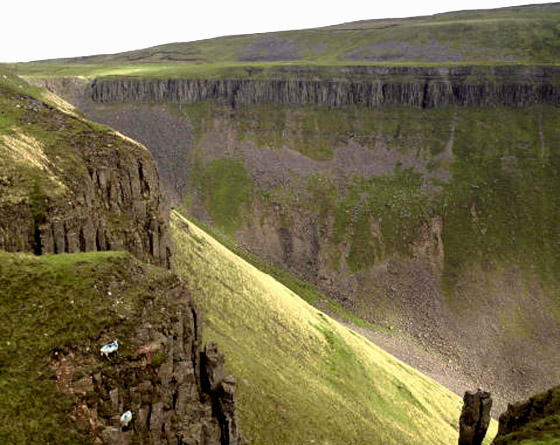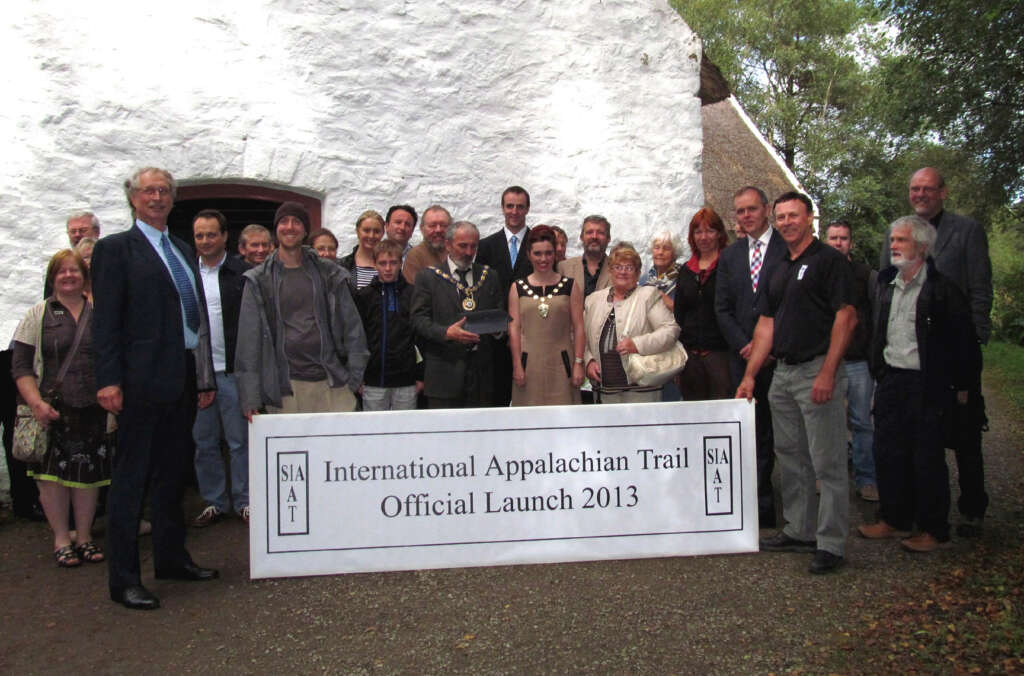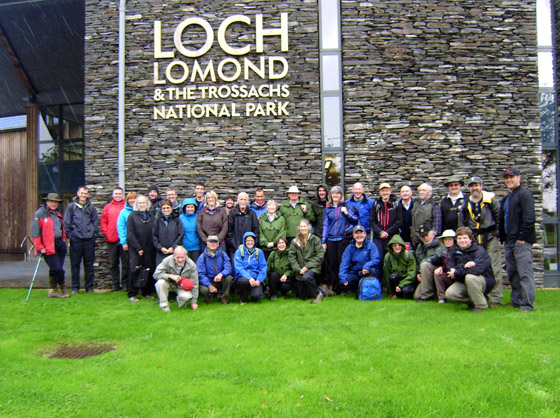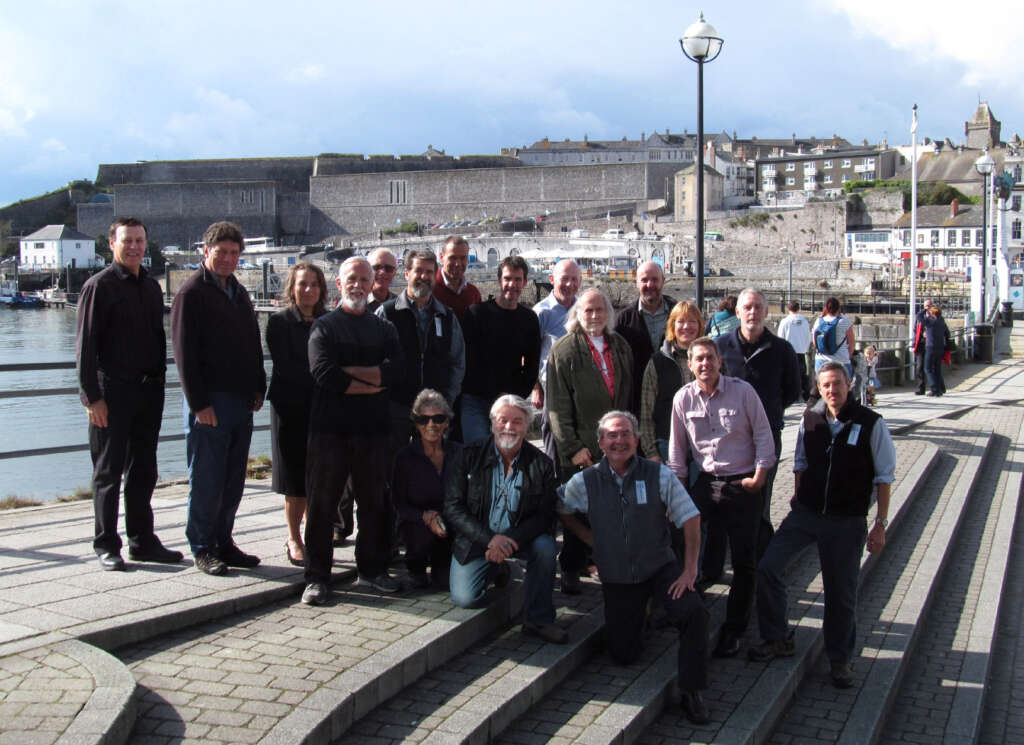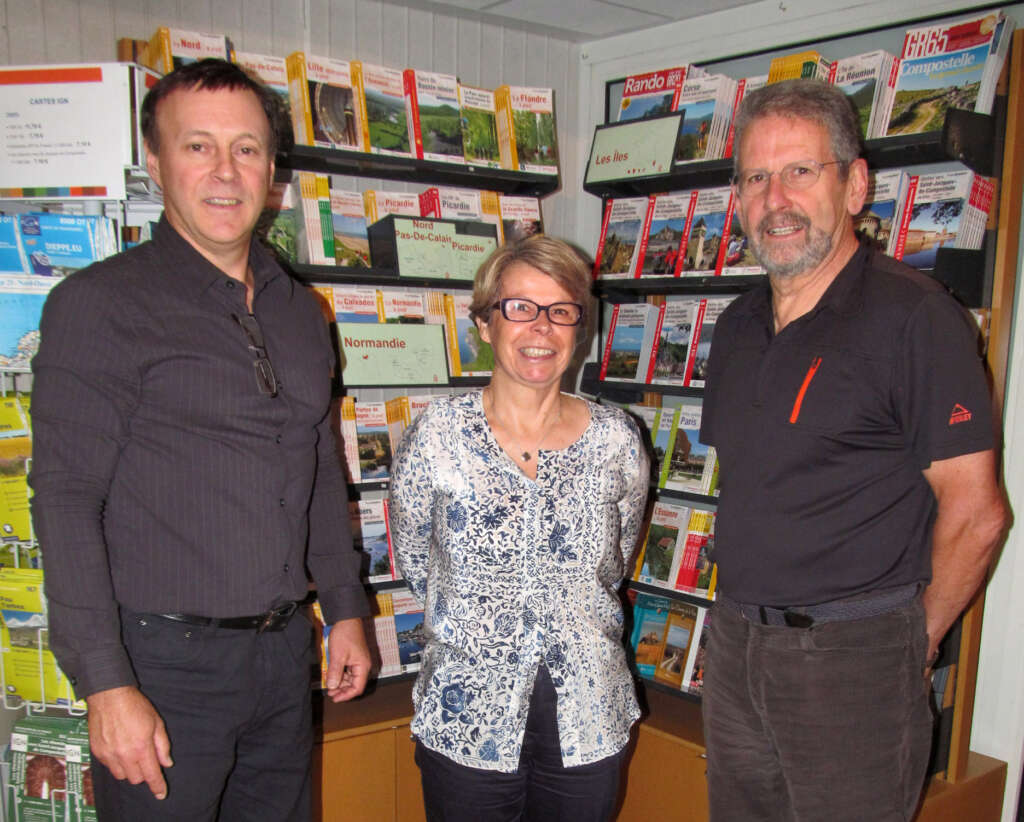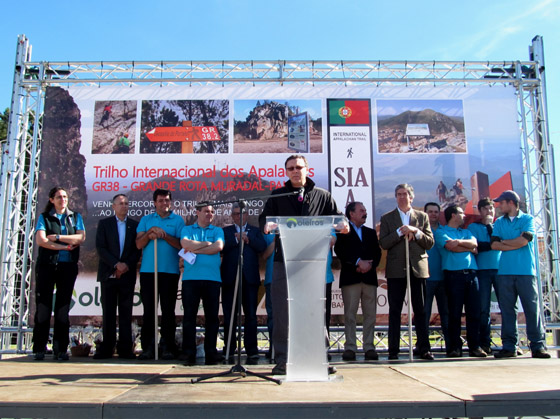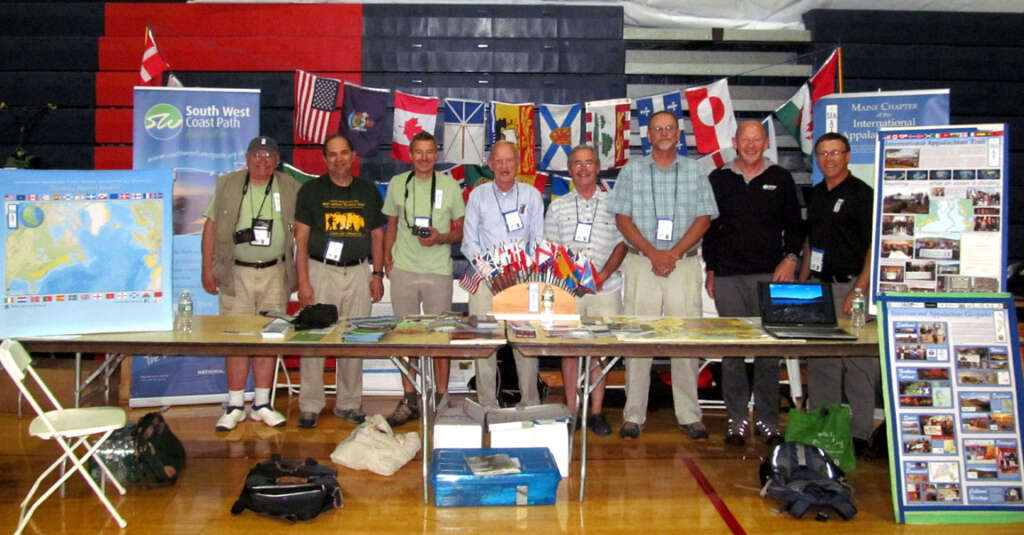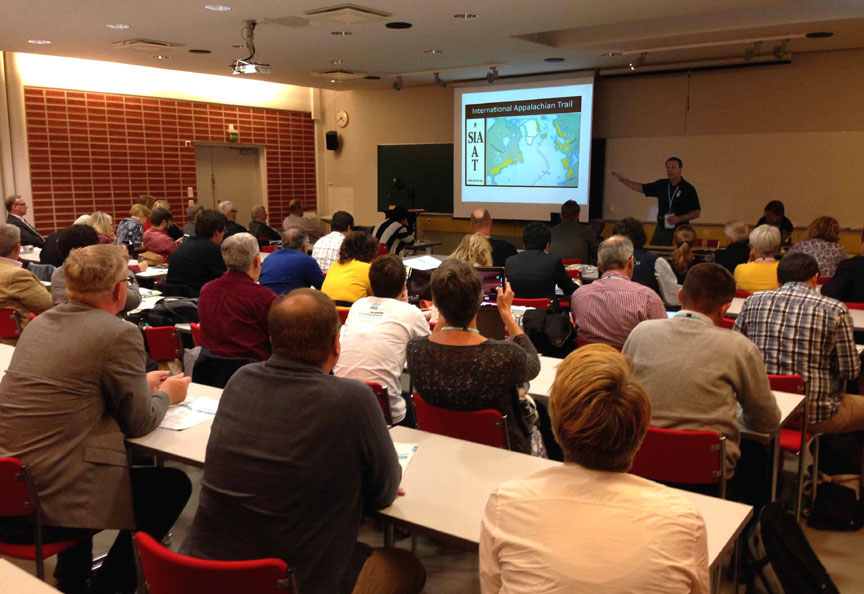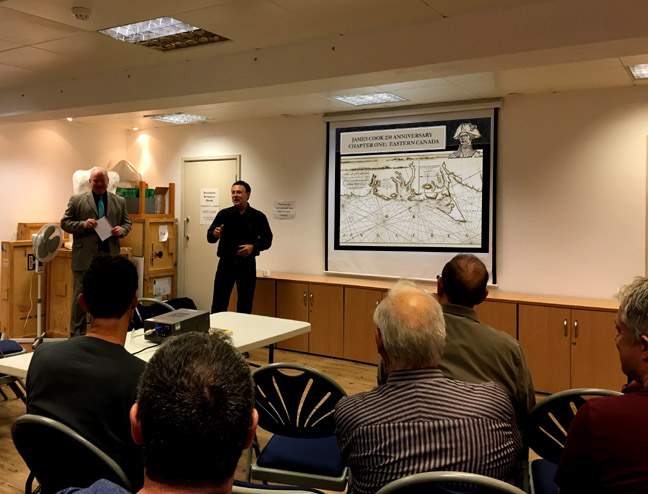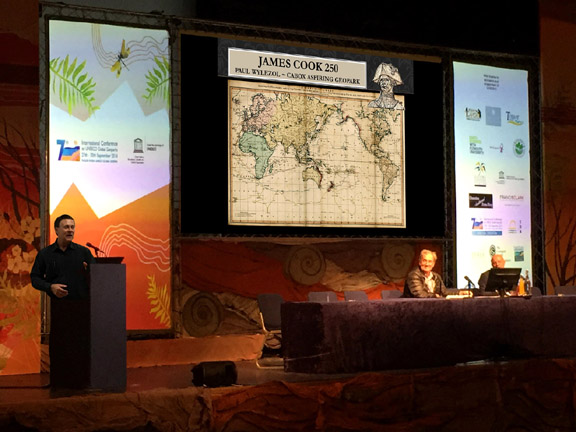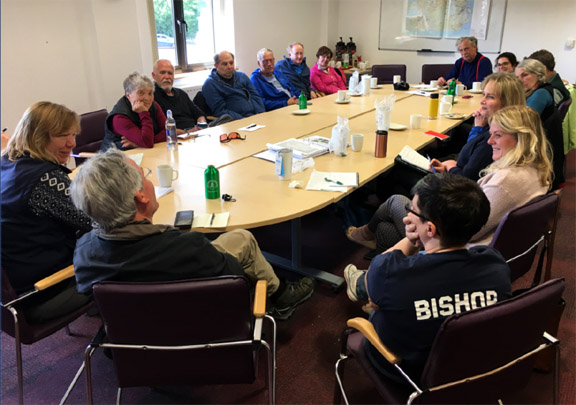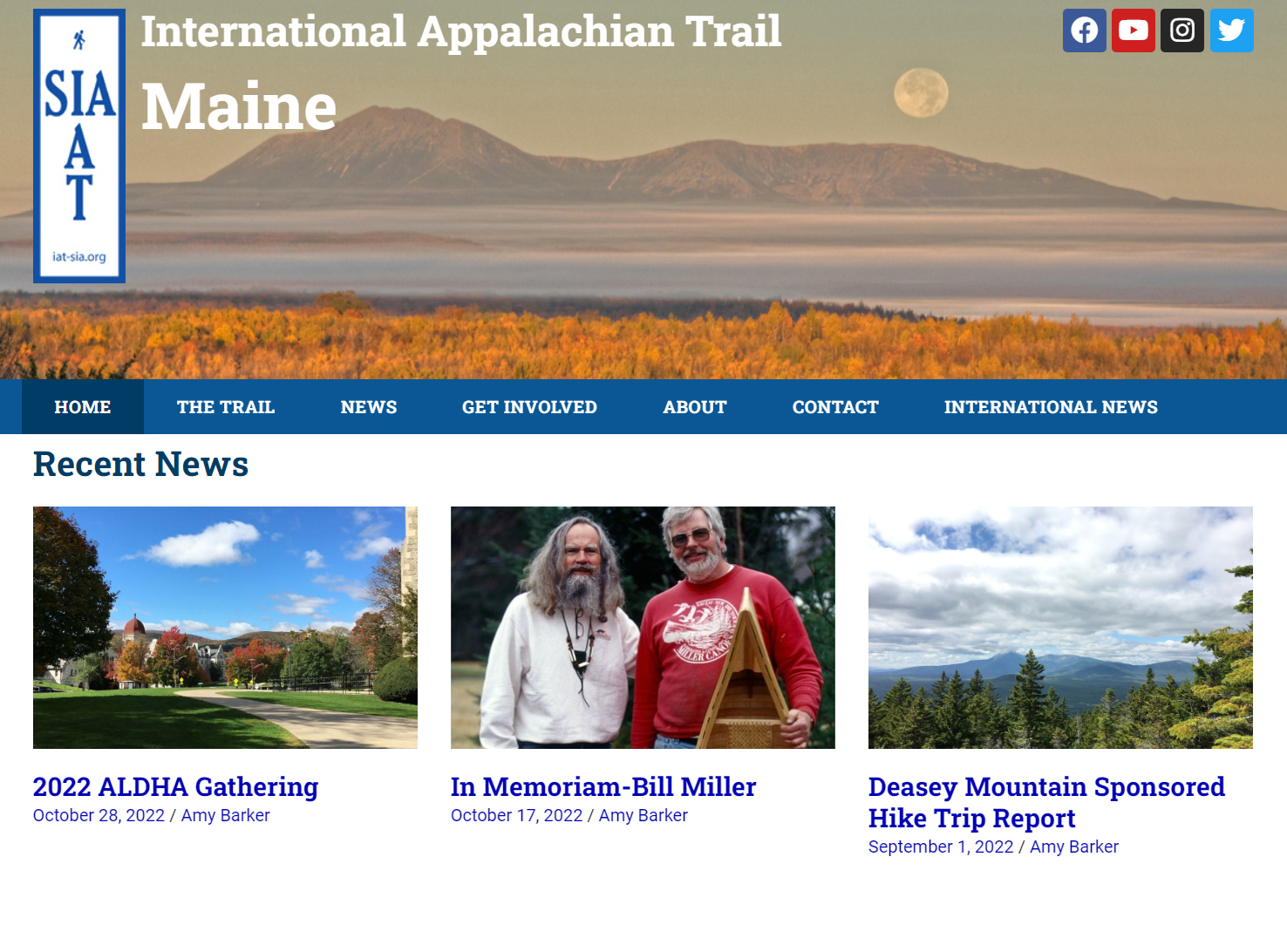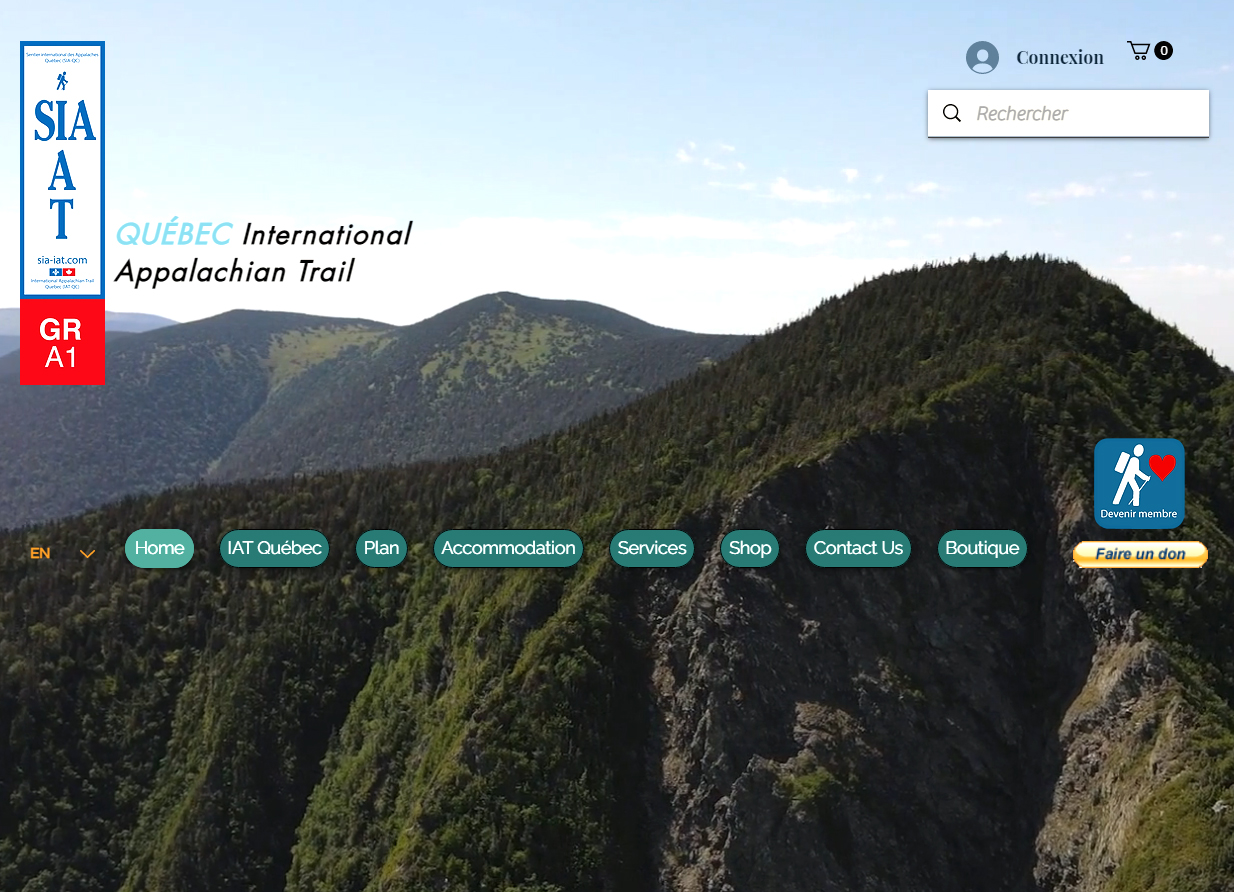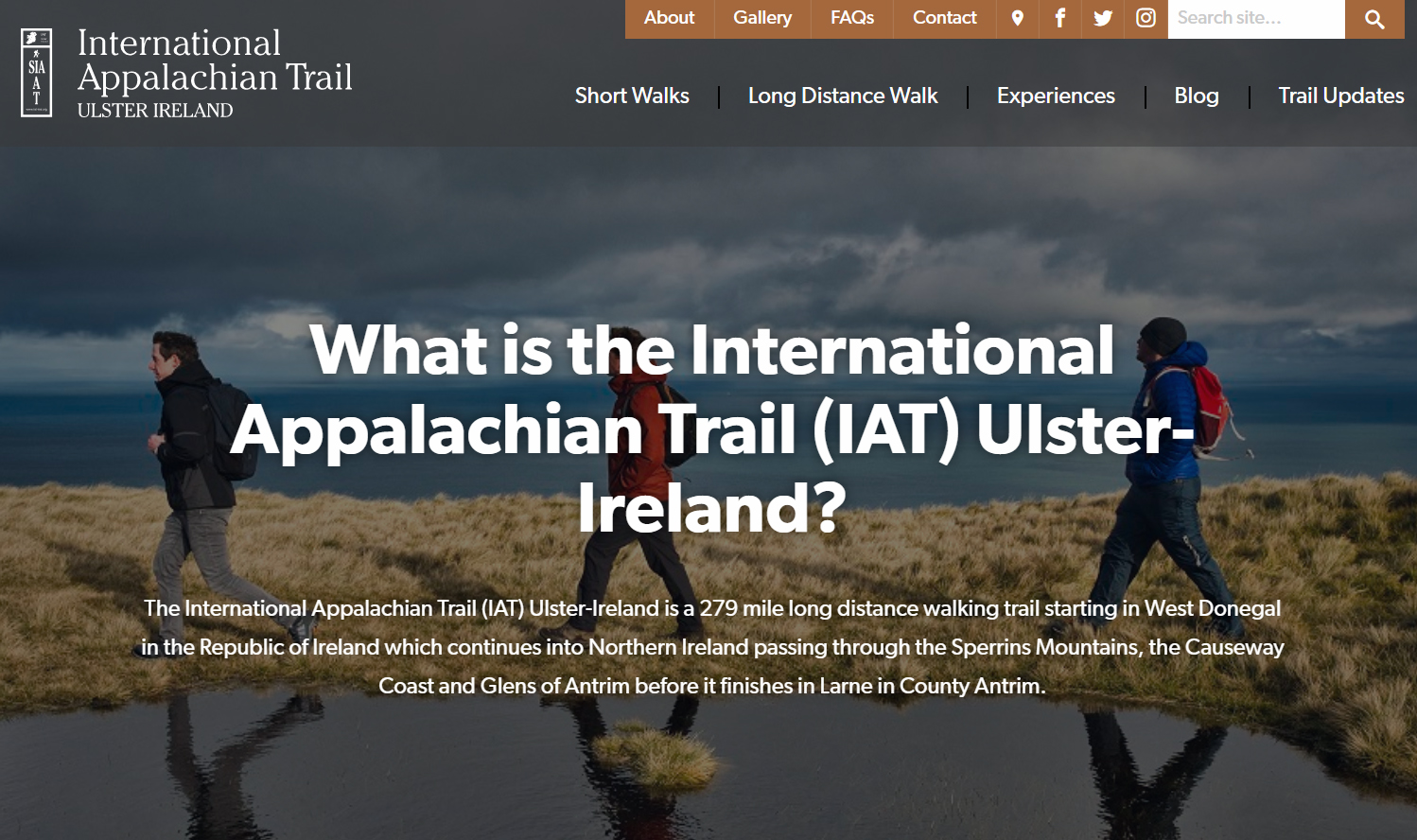Mission
The mission of the International Appalachian Trail Newfoundland Labrador is to protect and promote the natural heritage and outdoor adventure resources of Western Newfoundland, while maximizing their recreational, spiritual and economic value.
We believe the mountains, valleys, forests, bogs, barrens, streams, lakes and ponds are important natural resources with the potential to provide recreational activities, employment and business opportunities, spiritual renewal, and health and fitness benefits for residents and visitors to the western region of Newfoundland Labrador.
We believe in creating a lasting legacy of responsible stewardship whereby the province’s premier environmental assets are bequeathed to future generations in as good – or better – condition as they were inherited by the present generation.
And we believe that connecting people to their natural environment promotes conservation by increasing the awareness, education, and appreciation of nature.
Appalachian Mountains
The Appalachian Mountains are a magnificent, narrow and extensive, mountain range that parallels the eastern coast of North America for approximately 4000 kilometers (2400 miles), from the U.S. state of Georgia to Belle Isle, located 20km north of Newfoundland’s Great Northern Peninsula.
The mountains were formed by tectonic forces in the Paleozoic Era more than 250 million years ago and contain a mixture of eroded mountains, lush valleys, high ridges and wide, dissected plateaus. Dense forests cover much of the system, while some rock structures date back to the Precambrian and early Paleozoic eras approximately 500 million years ago, making it one of the oldest mountain systems on Earth.
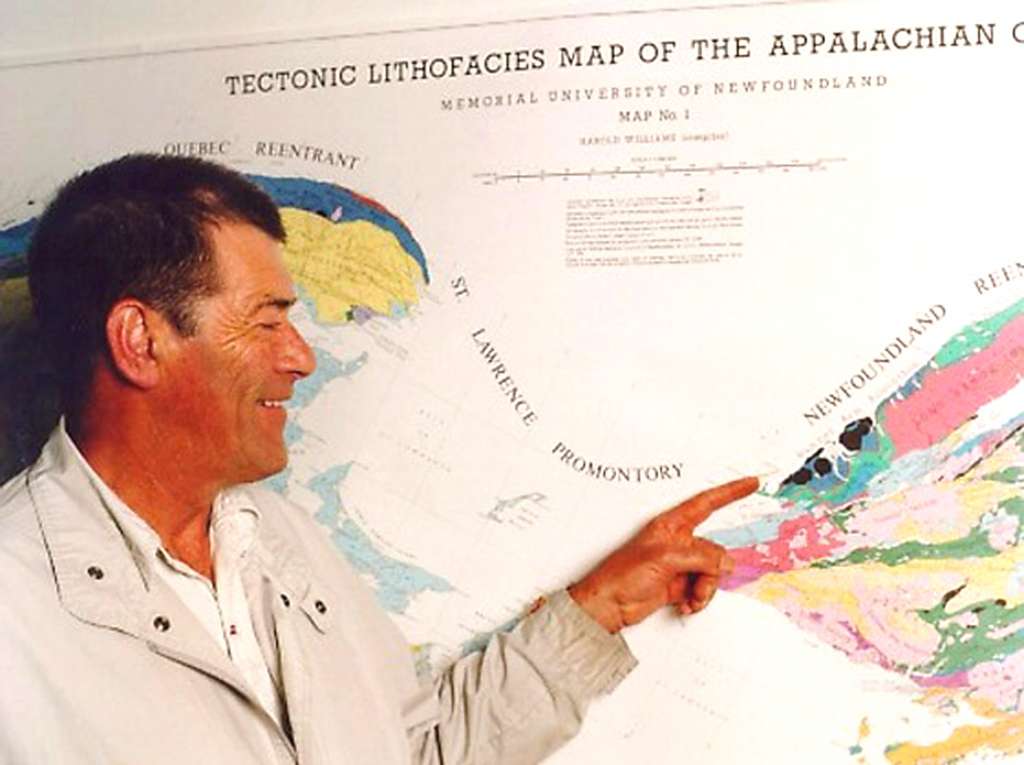
Renowned Newfoundland geologist Harold “Hank” Williams published the first comprehensive map of the Appalachian Mountains in 1978. His Tectonic Lithofacies Map of the Appalachian Orogen “must be regarded as the most outstanding contribution to Appalachian geology … and few geology departments in the western hemisphere and Europe do not have it hanging on their walls.” It is the first map to depict orogen-scale tectonic elements in terms of their original settings and locations and its influence has pervaded all subsequent studies of the Appalachians and contributed to the understanding of other ancient orogens around the world. (Photo at left: Hank Williams points to the Bay of Islands Ophiolite Massifs on his Tectonic Lithofacies Map)
With its unique and varied geological heritage, combined with the province’s extensive Irish roots, Newfoundland – and in particular the Long Range Mountains – reflects William’s colorful map and may be characterized as the pot of gold at the end of the Appalachian rainbow!
But it’s important to remember that the Appalachians are closely related to their orogenic cousin, the Caledonian Mountains in Eastern Greenland and Western Europe, placing Newfoundland at the geologic and academic center of the Appalachian-Caledonian Orogeny.
Appalachian Trail (AT)

The renowned Appalachian National Scenic Trail began as an idea of American Benton MacKaye, an off-and-on federal employee who proposed the construction of a hiking trail that would serve as a “project in regional planning” that connected eastern American states. His proposal, “An Appalachian Trail: A Project in Regional Planning,” appeared in the October 1921 edition of the Journal of the American Institute of Architects, and drew on years of talk of a “master trail” within New England hiking circles.
MacKaye envisioned a trail along the ridge crests of the Appalachian Mountain chain from New England to the deep South, connecting farms, work camps, and study camps that would be populated by eastern urbanites needing a break from the tensions of industrialization. In the 1930’s, state and federal employment programs greatly assisted in the development of this nascent Appalachian Trail, which was built by private citizens and essentially completed by 1937.
Today a continuously marked footpath extends north from Springer Mountain, Georgia to Mount Katahdin, Maine, for a distance of over 3,800 kms (2,280 miles). It is managed by the National Park Service, US Forest Service, Appalachian Trail Conservancy, numerous state agencies and thousands of volunteers. It is estimated that 3-4 million people walk a section each year.
To the south of Springer Mountain, the AT connects to the Florida Trail (3,075km) to form the Eastern Continental Trail, with a combined length of 6,875 kms.
International Appalachian Trail (IAT)
The original Appalachian Trail system was given a new perspective in 1993 when Richard (“Dick”) Anderson, the Commissioner of the Maine Department of Conservation, had a eureka moment when reflecting on the fact that the Appalachian Mountains didn’t end at the U.S./Canada border. Dick rallied other Maine outdoor enthusiasts and former Maine Governor Joseph E. Brennan, and on Earth Day, April 22, 1994, the proposal to build a hiking trail through the northern Appalachian Mountains and into Canada was announced at a news conference in Portland, Maine. As a result of their efforts, the International Appalachian Trail was formed.

Currently the “IAT” extends north from Mount Katahdin, Maine (the northern terminus of the AT) and crosses the Canadian-American border at Perth-Andover, New Brunswick. From there it crosses New Brunswick to Quebec’s Gaspe Peninsula, where it follows the Chic-Choc Mountains to Cap Forillon in Forillon National Park.
From Cap Forillon the IAT route re-enters New Brunswick and crosses the Confederation Bridge to Prince Edward Island where it runs east to Woods Island and the ferry to Pictou, Nova Scotia. Once in Nova Scotia the IAT heads east to Cape Breton, then on to the Newfoundland ferry terminal at North Sydney. In Newfoundland the IAT route extends north from Port aux Basques to Crow Head at the tip of the Great Northern Peninsula.
Beginning in 2009 at the invitation of the British Geological Survey (BGS), the IAT expanded to Western Europe, and now has partner trails in Scotland, Ireland, Northern Ireland, Wales, England, Spain, Portland, Iceland, and Greenland, a Danish territory geographically part of North America.
IAT Newfoundland and Labrador (IATNL)
The Newfoundland and Labrador Chapter of the IAT was formed at a general meeting held in the city of Corner Brook in April, 2003. The goal of the Chapter is to extend the IAT an additional 750km (450mi) along the Long Range Mountains from Port aux Basques in southwestern Newfoundland to Crow Head (just east of L’Anse aux Meadows) at the northern tip of the Great Northern Peninsula. As of 2023, the IATNL is composed of sections of the Newfoundland T’Railway (aka Trans Canada Trail), various gravel logging roads, IATNL backcountry wilderness trails and routes, and sections of secondary highways, including Route 430, the Viking Trail.
Noteable IAT Milestones, Projects and Events
The IAT visit to the UK and Ireland got off to a great start in June 2009. IATNL Chairperson Paul Wylezol and Treasurer Kevin Noseworthy travelled to Lochaber and met host and British Geological Survey Team Leader Hugh Barron, Scottish Environment Minister Roseanna Cunningham and representatives from Lochaber Geopark. on June 3 the IAT delegation, including 6 members from Maine, attended a public meeting in Fort William arranged to educate the public and various outdoor adventure representatives about the geology of the Appalachian Mountains and the history and goals of the International Appalachian Trail.
On Saturday, June 6, 2009 IATNL Chairperson Paul Wylezol, Treasurer Kevin Noseworthy, and IAT Maine’s Earl Raymond arrived in Dublin, Ireland to meet with representatives of the Geological Survey of Ireland (GSI) and various tourism and hiking organizations. After meeting Geological Survey of Ireland Director Peadar McArdle, the delegation joined an enthusiastic group of hikers, trail builders, and tourism writers on a trek into the Dublin Mountains, including a walk along a short section of the Wicklow Way. Bill Murphy of Mountain Meitheal (a conservation group) discussed the various conservation techniques, including drainage and boardwalks, used to develop the newest sections of trail.
On June 5, 2010 at the grand opening of the Appalachian Trail Museum in Pine Grove State Park, Pennsylvania, the International Appalachian Trail officially welcomed Scotland and the West Highland Way as its first European Chapter. Joining IAT President Paul Wylezol were ATC executive members, AT Museum directors, and State and County Representatives. The official welcome came nearly a year to the day that an IAT delegation from Maine and Newfoundland travelled to Scotland to hold exploratory meetings with representatives from the British Geological Survey and other local stakeholders.
On October 7, 2010 during the Adventure Travel World Summit in Aviemore, Scotland, the IAT welcomed nine new European chapters to its growing international trail network. Coast Alive partners in Norway, Sweden, Denmark, the Netherlands and England, along with partners in Ireland, Wales, the Faroe Islands, and Iceland, joined what is quickly becoming one of the largest trail networks in the world. The goal of the IAT is to extend to all Appalachian-Caledonian Mountains formed by the closing of the Iapetus Ocean more than 250 million years ago.
On March 16, 2011 at their Annual Meeting in Varberg, Sweden, IAT partner Coast Alive officially designated more than 10,000 kms (6,000 miles) of North Sea Trail and North Sea Cycle Route as part of the International Appalachian Trail. The new IAT route will cross much of Norway, Sweden, Denmark, the Netherlands, and England, and follow much of the North Sea coastline.
On March 18, 2011 at the Canadian Embassy in Dublin, Ireland, new Canadian Ambassador Loyola Hearn extended a Canadian and Newfoundland welcome to IAT Ireland. Also in attendance were IAT President Paul Wylezol and representatives from Failte Ireland, Geological Survey of Ireland, Department of Foreign Affairs, Irish Sports Council, Atlantic Corridor, Donegal Local Development Co., Coast Alive Partnership, Flagler Films, and Fox Chalet Rentals.
On September 18, 2011 at the IAT Annual General Meeting in Gaspesie National Park, Quebec, the IAT welcomed France to its growing network of trails in Europe, where the mountains were formed through the same geological events that formed the Appalachian Mountains in North America. At hand was Armand Ducornet, Secretary General of La Fédération Française de la Randonnée Pédestre (French Rambling Association), with over 200,000 members in 3,000+ clubs and associations.
On June 15, 2012, Mr. Louis Arreaga, United States Ambassador to Iceland, hosted a reception for all attendees of the IAT Annual General Meeting in Reykjavik. The event was held at the Ambassador’s embassy residence in downtown Reykjavik, and was attended by approximately forty guests, including Canadian Ambassador Alan Bones and Norwegian Ambassador Dag Werno Holter. An informal social gathering in the garden was followed by formal welcome and congratulatory message by Ambassadors Arreaga, Bones and Holter, former Appalachian Trail Conservancy Executive Director David Startzell, IAT Chairperson Paul Wylezol and IAT Founder Dick Anderson.
On June 18, 2012, following the IAT AGM in Reykjavik, Iceland, representatives of the IAT from both sides of the Atlantic Ocean traveled to the Mid Atlantic Ridge in Thingvellir National Park and bridged the geological divide between North America and Europe. Monday’s full-day of touring began with a one-hour bus drive from Reykjavik to Thingvellir, where ITA President and park warden Olafur Haraldsson – a renowned arctic explorer – gave a guided tour through the park, from the ridge (aka Mid Atlantic Rift) to the historic Althing outdoor assembly, held on the plains of Thingvellir beginning in 930 AD.
In April 2013, Britain’s first National Trail – the Pennine Way – joined the IAT. The 268-mile (429-km) path follows the top of the Pennine Mountains along the rugged backbone of north-central England, from the Peak District National Park through the Yorkshire Dales and over Hadrian’s Wall to the Cheviots Hills on the border with Scotland. It is amongst the finest upland walking in England. The Peninne Way National Trail is a grand traverse up the center of England, with 17% within the Peak Districk National Park, 20% in the Yorkshire Dales National Park, and 24% within the Northumberland National Park. (Total 61% designated.) Since October 2012, nine UK National Trails (www.nationaltrail.co.uk) have joined the Pembrokeshire Coast Path as members of the International Appalachian Trail.
On August 31, 2013, the International Appalachian Trail welcomed Northern Ireland’s Ulster Way as its newest member and celebrated the completion of the IAT across the emerald isle, from Slieve League in the Republic to the ferry terminal at Larne. The official launch was held at the Bluegrass Music Festival at the Ulster American Folk Park in Omagh. The event was attended by IAT Europe Vice President and trail organizer Magne Haugseng and a number of invited guests, including Northern Ireland Environment Minister Mark H. Durkan, Donegal North-East Member of Parliament Joe McHugh, and Omagh District Council Vice Chair Sorcha McAnespy. Also on hand was IAT Chairperson Paul Wylezol, who extended an official welcome to the Ulster Way.
On September 18-20, 2013, the IAT held its first Annual General Meeting in Western Europe, at Loch Lomond and The Trossachs National Park, Scotland. It was here in 2010 that the West Highland Way, became the first section of the International Appalachian Trail in Europe. After opening welcome and introductions at park headquarters, the three-day event began with an afternoon trek on the future John Muir Way, an east-west coast to coast trail which is scheduled to open in the spring of 2014, the 100th anniversary of the death of renowned Scottish American conservationist John Muir.
From October 6-9, 2014, the International Appalachian Trail held its Annual General Meeting in and around the historic city of Plymouth, England, in conjunction with a National Trails Annual Meeting. The event was hosted by the South West Coast Path National Trail, and included tours of Dartmoor National Park, English Riviera Geopark and South Devon AONB (Area of Outstanding Natural Beauty). The October 7 Meeting was held at the National Marine Aquarium on the waterfront in Plymouth. The meeting was opened by Plymouth Deputy Lord Mayor Pauline Murphy and Council Leader Tudor Evans …
After the IAT 2014 Annual General Meeting in Plymouth, England, IAT/IATNL Chairperson Paul Wylezol traveled to Paris, France to meet with Madame Claude Hue, President of La Federation Francaise de la Randonnee Pedestre (FFRP) and Monsieur Armand Ducornet, Vice-President of la Federation Europeanne de la Randonnee Pedestre. The October 13 meeting was to discuss the IAT route across France, which will connect with IAT England (via the English Channel) to the north and IAT Spain to the south. The planned route will follow existing FFRP trails along the west coast of France, occasionally turning inland and passing through rural towns and countryside.
On a sunny and warm Saturday, March 28, 2015, approximately 1,000 people gathered in Naturtejo Geopark, Portugal to officially launch GR38 – Grande Roto Do Muradal-Pangeia as the newest section of the Trilho Internacional dos Apalaches. Joining the crowd were Geopark President Armindo Jacinto, Oleiros Municipal President Fernando Marques Jorge, Turismo Centro Portugal President Pedro Machado, Naturtejo Geopark Geologist and IAT Portugal President Carlos Carvalho, Canadian Consul David Marion, IAT/IATNL Chairperson Paul Wylezol and IAT Spain President Ruth Hernandez.
On July 17-19, the IAT attended the ATC 2015 Biennial at Shenandoah University in Winchester, Virginia, where it gave 3 hours of presentations and distributed information from an extra large conference booth. Among the 1000+ in attendance were IAT Founder Richard “Dick” Anderson, IAT Chairperson Paul Wylezol, IAT Geologist Walter Anderson, IAT Maine President Don Hudson, IAT Europe Vice President Hugh Barron, UK National Trails Rep Mark Owen and distinguished Appalachian geologist Jim Hibbard.
On September 3-5, IAT Chairperson Paul Wylezol attended the European Geoparks Conference in Oulu, Finland, where he gave a presentation on the International Appalachian Trail and its connection to Global Geoparks. The IAT crosses 12 Global Geoparks and Aspiring Geoparks in Canada, Western Europe and Morocco. The 3-day event was held at the University of Oulu and the nearby Rokua Geopark, and was attended by over 400 representatives from European, Canadian and other Global Geoparks and Aspiring Geoparks.
On September 16 & 17, 2016, IAT Chairperson Paul Wylezol was in England visiting the Captain Cook Memorial Museum in Whitby and Captain Cook Birthplace Museum in Marton. While there he gave a presentation on the 250th Anniversary of James Cook completing his surveys in Eastern Canada, most noteably in Newfoundland. In the coming years, James Cook 250 will a unique opportunity for the IAT and partner UK National Trails to promote their natural and cultural heritage across the North Atlantic and South Pacific.
On September 27-30, 2016, IATNL/Cabox Aspiring Geopark Chairperson Paul Wylezol attended the 7th International Conference on UNESCO Global Geoparks at Torquay, England, where he learned more about the UNESCO Global Geopark programme and gave a presentation on next year’s 250th Anniversary of James Cook completing his surveys of Western Newfoundland and Eastern Canada, and a presentation entitled Geopark Plus, which explored the possibility of combining two United Nations programmes – UNESCO Global Geoparks and REDD+ – to help establish ecologically and economically sustainable Global Geoparks in developing countries.
From June 2 to 7, 2019 representatives of the International Appalachian Trail (IAT), Appalachian Trail Conservancy (ATC), Appalachian Mountain Club (AMC) and Appalachian Trail Museum gathered in Ulster Ireland for an Outdoor Economy Forum to discuss common issues and assist IAT Ulster Ireland develop a world-class trail network. IAT North America was represented by chapter members from Maine and Newfoundland, while IAT Ulster Ireland was represented by officials from Northern Ireland and the Republic of Ireland.
Some Other IAT Chapters
Visit some of our other IAT Chapters, in both North America and Western Europe.
